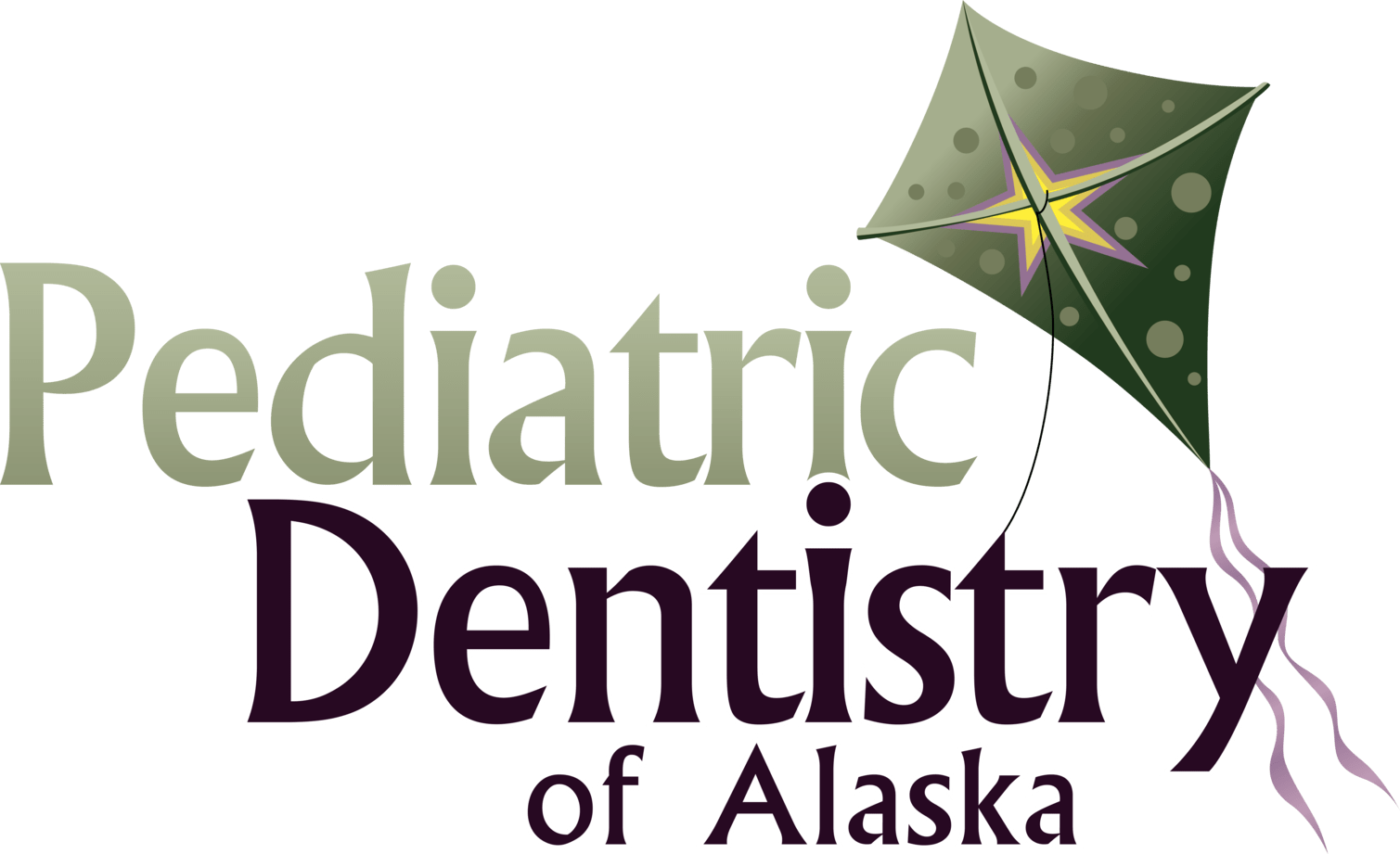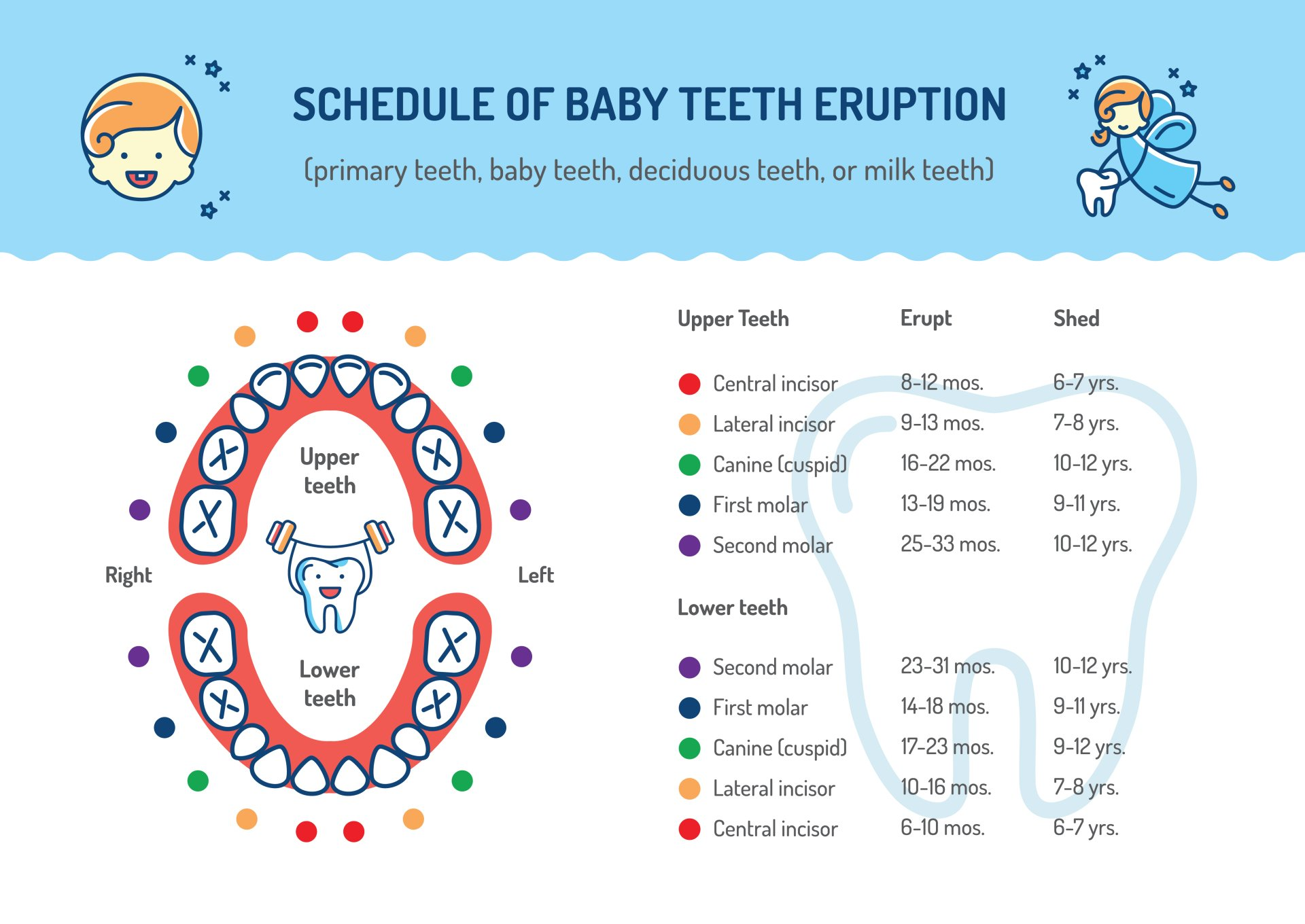Understanding Baby Teeth | Eruption Schedule
Baby teeth begin erupting between 6-12-months, and typically continue through the age of 3 years old. Throughout this period, a child’s gums may feel tender and sore from the pressure created by the newly erupting teeth. You can soothe your child’s gums by massaging with a clean finger, or letting them chew on a teething ring or a cool, wet cloth. In order to monitor the proper health and eruption from an early age, we recommend their first visit to the pediatric dentist by their first birthday.
Teething Child
All twenty primary/baby teeth will usually be in by the time your child is 2-3-years old. Having a teething child can be stressful, especially if your child is experiencing some teething discomfort.
Teething babies are likely to chew anything they can get their hands on. Try to ensure that your child stays away from materials that are hard enough to break their teeth or make their gums bleed. Please also avoid using topical anesthetics like Orajel to numb their gums.
Some methods to soothe during the teething process include massaging your child’s gums with a clean finger, damp cloth, or with a teething ring. If these methods do not work, our pediatric dental specialist or your child’s family doctor can recommend a mild over-the-counter medication to relieve the teething pain.
First Dental Visit
A common question that all new parents have is when to bring their little one in to see the dentist.
The American Academy of Pediatric Dentistry encourages infants to be seen by their first birthday or when the first tooth comes in, which is usually between six and twelve months of age. Early examination and preventive care has demonstrated significant correlation with reducing cavity risk and protecting your child’s smile now and in the future.
During your child’s first visit we will perform a preventative screening, discuss dietary and hygiene counseling, demonstrate proper oral hygiene and remove plaque, review non-nutritive sucking habits such as thumb sucking, discuss dental emergency prevention, eruption schedules, growth and development, and answer any questions you may have.
Preparing your child for his/her first visit is as simple as practicing good oral hygiene habits at home.
What Toothbrush and Toothpaste Should I Use?
Toothbrush
Like toothpaste, there are many different types of toothbrushes on the market. For infants without teeth, a damp or wet cloth can be used to clean their gums until their first tooth begins erupting. Once that happens, toothbrushing should begin with a brush that is effective at cleaning the teeth. An extra-soft or soft bristled brush can be more comfortable for the gums and prevent recession associated with firm bristles or heavy-handed brushing. Parents should help their children brush their teeth to ensure it is done effectively. Because many children desire to do it on their own, it can be helpful to allow the child to brush before or after you do it for them. We recommend brushing for 2 minutes in the morning and at bedtime. To make brushing a fun activity for your child, it may be helpful to play counting games, sing songs, play music, or use sticker charts.
Toothpaste
There are many toothpastes on the market, and it can be overwhelming to pick one out for your children. The American Academy of Pediatric Dentistry recommends using a remineralizing toothpaste with fluoride in it. For children less than 3 yrs of age, a small smear (size of a grain of rice) of fluoride toothpaste is recommended. For children over 3 yrs of age, a small pea-size amount is recommended. Using a toothpaste that has the American Dental Association (ADA) seal ensures that it has been verified to contain appropriate amounts of fluoride in an effective and safe formulation. Children should brush for two minutes twice a day, once in the morning, and once before bed. Some families prefer to use a toothpaste that does not contain fluoride, and we recommend researching the various options to choose the best fit for your family. Hydroxyapatite toothpaste has demonstrated effectiveness in reducing cavity risk and may be a good alternative option, but needs to be studied further.
How Often Should My Child See The Dentist?
Your child should be visiting our dental office every 4-to-6-months depending on their oral health and the treatment plan they are on. However, if your child is experiencing a toothache, bleeding gums, or other painful symptoms, you should call our office to schedule an evaluation.
Depending on your child's individual circumstances, our pediatric dentist may want to see them 2-3 times a year. Regular preventive treatment and practicing effective oral hygiene at home are the best ways to prevent oral health diseases and to keep your child's smile looking bright and healthy.
Children’s Dental Care
Research continues to show that the health of our teeth is extremely important for our overall health and well-being. In order to prevent dental and oral health issues in children, it is important to start early with education and prevention. It is never too early to start teaching the importance of oral health to your child. With good habits formed from an early age, your child will be much more likely to have healthy teeth and gums throughout their life, with fewer dental procedures, and better overall physical health. Here are some tips to keep your child’s oral health in great shape:
List of Services
-
For Your Baby
Baby bottles and sippy cups are extremely detrimental when used with sugary drinks and for extended periods of time, such as during nighttime or naps. In fact, using a bottle at night is the most common cause of severe early childhood cavities. Examples of damaging liquids include formula, juice, teas, pedialyte, soda, and other sugar-containing liquids. For this reason, it is extremely important to clean your baby's gums and teeth with a toothbrush or a wet gauze after feeding.
-
Instill Good HabitsList Item 1
It is important for your child to brush their teeth after breakfast and before they go to bed. They may not want to now, but over time they will develop a habit of proper oral hygiene. Developing the habit early will make it easier for them to keep it later in life.
-
Avoid Grazing
Frequent snacking throughout the day significantly increases the risk for cavities, and is often overlooked. Fermentable carbohydrates such as goldfish crackers, puffs, etc. lead to acidity of the mouth and frequent intake prevents the buffering from saliva that protects our teeth. This in turn leads to increased overall risk for cavities.
-
Cut Down On Sugar
Kids are going to want sweets. Who doesn’t? The difference between adults and children is that we (usually) have self-control. This means that we know when to say no to candy, but kids will eat until they are sick. Limit candy, soda, and other sugary drinks to infrequent and small amounts so that your child does not develop cavities or other health issues.
-
Tips To Help With Your Child’s Dental Fear
- Speak with your child about going for a visit to the dentist.
- Watch what you say. Do not use negative words like “hurt” or “pain” when referring to the dentist or your teeth.
- Bring your child with you to your dental appointments and have them sit with you in the dental chair.
- Give your child a soft-bristle toothbrush to practice brushing.
- Maintain your child’s dental visits regularly. The Academy of Pediatric Dentistry recommends that children visit the dentist by their first birthday, and then every six months after that for regular cleanings and checkups.

